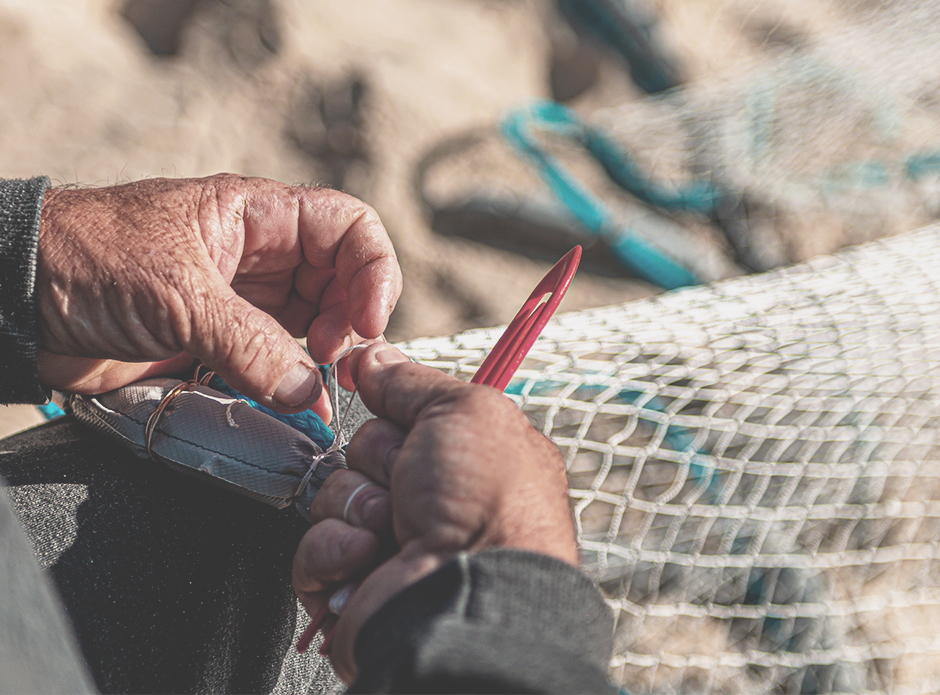Galicia is synonymous with sea and fishing and within this world, there are innumerable techniques with a long tradition. Fishing is a primary activity that feeds many families and thanks to which we have been feeding ourselves for several centuries. But despite the fact that it is a trade with many years, this has been adapted as technology evolves. Nevertheless, Traditional methods are still used today., That's why today we are going to explain what are the types of artisanal fishing and the different gear used.
What is artisanal fishing?
Artisanal fishing is one that uses traditional techniques and with little technological development. It is practiced within the territorial sea, namely, to no more than 10 miles away from the coast. As for the types of artisanal fishing boats that exist, they are always small, between 12 y 16 metros. Also, the skipper is usually also the owner of the boat.
Another typical characteristic of artisanal fishing is that it is carried out on a small scale.. There are no big companies, but rather they are small families or individual fishermen. Outings are short-lived, unlike the long periods on the high seas typical of industrial fishing. Plus, the fish caught is usually used for family or community consumption, namely, not exported.
Types of artisanal fishing
There are different types of artisanal fishing gear. Its classification can be made based on the techniques used in each one., the instruments used or according to the type of species they capture. And depending on its ability to retain fish, these arts will have a greater or lesser impact on the environment. But on a general level, all traditional fishing gear is done on a small scale so its impact is minimal.
Fishing gear
Highlights the screw it up, the fixed network art with more tradition and importance. It is a type of passive fishing, wait for the fish to get entangled in it. In this case, a net made up of three panels sewn to a horizontal bar is used.. According to the size of the mesh holes, this will be used to capture a type of smaller or larger species.
drag gear
Although the majority of trawled or towed gear is used for deep-sea fishing, there are some types of drag typical of the artisanal fishing. For example, him bou de vara or trail, gear towed from a boat. These are in contact with the bottom and have a spike system that moves it, which allows to catch molluscs.
Another of the main trawling gears is the I look for, considered one of the most selective methods. This is because the fishermen do not cast the net into the sea until they have found a school of fish of the species they want to catch.. In this case, two boats are necessary to be able to use it.. One of the ends of the net remains fixed to the main boat while the auxiliary holds the other end of the mesh and draws a circle until the net is closed at the starting point.. once it is fenced, get on board the ship.
hook arts
Within the hook arts we can classify four different types.
rope or hand line: consists of a vertical rigging that acts as a guide and from which hang one or more lines with hooks and baits. Its operation is like that of the traditional fishing rod and it also offers the advantage that it allows to be selective. Namely, specimens that do not interest can be returned to the sea.
Potter: It is a vertical rig that has several hooks at the lower end along with a weight that makes it remain at the bottom of the sea.. It is used to catch squid, potassium, etc.
Curricán: it is a horizontal rig that is towed by a boat.
longline: it is a main line or rope horizontally and on which different lines with hooks depend. The baseline can be found on the surface, tied to floats, or underwater.
trap arts
In this case no movement is made to attract the species, so we're talking about a passive type of fishing. Within this group we can highlight the nasas. Rigs with a wooden structure and lined with a net. They have a hole that allows the entry of octopuses and crustaceans but, once inside, lured by the bait, prevents his departure.
seafood arts
The seafood arts differ in types.
shellfishing on foot: shellfishers usually use the same tools that are used to work the field, like for example the sack, legion, sickle… But in this case, They are used to remove sand and algae from the beach and to be able to capture different types of molluscs by hand..
Seafood from boat: different gear is tied to the ship, like the trail or the hook. With the movement of the boat, These gear remove the bottom of the sea and thus capture the different molluscs and crustaceans..
harpoon arts
It is a type of underwater fishing for which different harpoons or rods are used. It is probably the oldest traditional fishing art since bone and stone harpoons have been found..
craft tradition: the importance of taking care of what is ours
It is clear that the types of traditional fishing are indisputably better than industrial fishing. The artisanal fishing generates local employment and is also a safe bet towards sustainability and care for the environment. And these are values that we have very present in Conservas Daporta, because our canning crafts nos define.
That's why we select the best products, direct from the Galician fish markets and extracted from our coasts. Also, all our production techniques are traditional, reason why our productive capacity is reduced. We respect the ecosystem, avoiding invasively extracted products.





